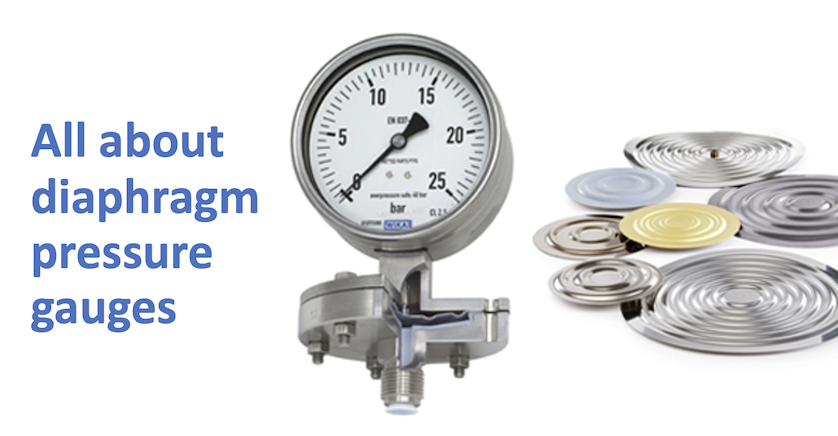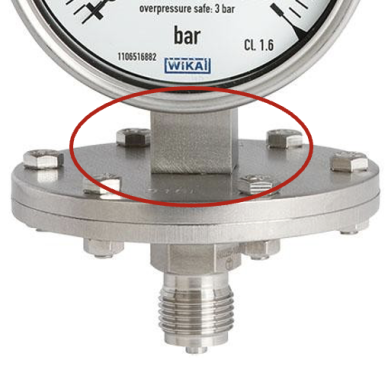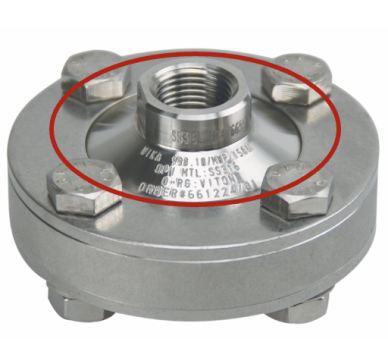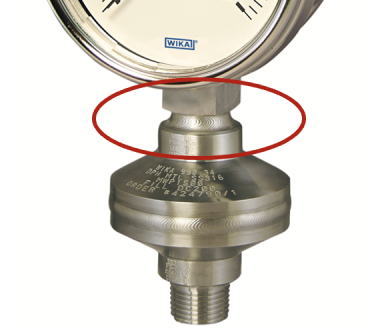
The flexible membrane in a diaphragm pressure gauge, a specialized industrial gauge, gives it several advantages over standard Bourdon tube gauges and capsule pressure gauges.
A diaphragm pressure gauge, sold under the Sealgauge™ brand at WIKA and also known as a Shaeffer gauge in the industry, uses a sensitive yet robust diaphragm as the measuring element. The main characteristic of a diaphragm gauge is that it does not require a transmitting liquid (system fill) to transfer the pressure displacement into a pointer rotation. A push rod connects the diaphragm with the movement mechanism.
Comparing Diaphragm Gauges and Bourdon Tube Gauges
Diaphragm pressure gauges are easily distinguishable from Bourdon tube gauges. The latter houses the Bourdon tube inside the case, while the diaphragm gauge contains the diaphragm sandwiched between the upper and lower housing (flange) horizontally outside of the case. The size of the flange depends on the pressure range. Ranges ≤100″WC (250 mbar) require a larger diaphragm (nominal size 160 mm, or 6″) while ranges >100″WC (250 mbar) use a smaller diaphragm (nominal size 100 mm, or 4″).
Diaphragm Gauges vs. Diaphragm Seals
Do not confuse a diaphragm gauge with a diaphragm seal. The diaphragm seal is just a component and requires a Bourdon tube gauge to indicate the pressure, while a diaphragm gauge is a pressure indicator that uses a diaphragm as the sensing element.
In industrial applications, the diaphragm has grooved concentric circles, creating a larger surface area for optimized pressure measuring and service life.
The big differences between a diaphragm gauge and a diaphragm seal system are that:
• The upper housing of the diaphragm seal is connected to the case.
• There are no threaded or welded connection.
The unique characteristics of a diaphragm pressure gauge makes it a unique problem solver in the process industry.
This two-part series continues with Three Reasons to Use a Diaphragm Pressure Gauge.




